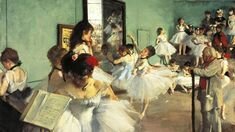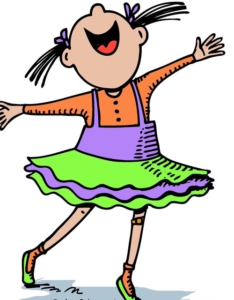28 Years of Nutcracker – By Judy Russell
It was around the New Year of 1991 when I first discussed the idea of a full length Nutcracker with my friends Mark Erikson and Macarena Ganderillas while visiting them at their North Hollywood home. Mark had some experience with a Nutcracker Ballet co-production while attending ballet school in Fort Worth Texas, so he was excited about the idea and encouraged me to pursue it. Once back home, I discussed the idea further with family and friends, contacted the Prince George Symphony Orchestra and set the wheels in motion. We presented the first annual Nutcracker Ballet in December 1991. Judy Russell’s Enchainement Dance Centre would provide the dancing cast, the costumes, the set, the lighting design and special effects. The PGSO would provide the music. Our goal with the work was to not only start a family tradition for our community, but to also give inspired young dancers the opportunity to perform in a classic full length ballet complete with a live symphony orchestra. Experiencing the joy of performing with a live orchestra is rare, especially in smaller communities. Prince George is one of a select few communities that can boast having a professional symphony orchestra. The raw energy and deep inner emotion that is elicited by the forces of the live music and the strength of the dancing core is palpable. The live ballet can be visceral for both the audience and performer. Casting the first ballet was an exciting challenge. It was my hope that we could draw on dancing talent from all of the dance schools in the City. The only exception would be casting a local Prince. Luckily, I had an ace-in-the-hole. A year or two prior, we had sent off one of our young male dancers to train at the National Ballet School of Canada, Toronto. Chris Larsen was just 13 when he left home to start his ballet career. By the time he was 15, Chris had developed into a strong young man. I mentioned the idea to him and he was eager and able to return home to fill the role of the Nutcracker Prince two years running. After Chris could no longer leave the Ballet school it became necessary to “import” successive professional Nutcracker Princes. Eventually an increase in boys training at the dance studio meant that we would be able to cast our Nutcracker Princes locally. And have done for each biannual Nutcracker since 2001. This year marks the 16th production of the Nutcracker Ballet. My Nuts team and I continue to draw on talent from within our community, but for the first time in a long while we have had to look outward for the Nutcracker Prince. Again good fortune hit. This year our Nutcracker Prince hails from Terrace. Last March, I spotted Julian Hunt at the Prince George Dance Festival and saw immediately his potential to fill the role of the Prince. Julian is a lovely, talented young man who will have a great career if he wishes. Of course, the ballet would be incomplete without a ballerina or two, or three. Over the years I have had the great pleasure to cast many wonderfully talented young women in a variety of roles. This year is no exception. From Clara, to the Snow Queen to the Sugar Plum Fairy I continue to be blessed with many inspired and dedicated young dancers. In fact, I have double cast various principle roles again this year, as there are multiple able dancers. The dancing roles in the Nutcracker are challenging and much coveted. The dancers selected for the principle roles must be well trained, quick learners and strong. The partner work alone requires unbelievable strength and stamina. Not to mention the intestinal fortitude needed to dance two full shows per day en pointe. We do our best to shift the dancers on and off, so that they are able to restore their bodies, but they are still required to dance something in each show. These young people troop on with little whining and fanfare. Truly inspiring. One of the strongest traditions associated with our production of the Nutcracker is that of the adult participation in various scenes throughout the show. In fact, scene one, “The Party Scene”, features nearly 100 performers of various ages from 3 years to 60. Costuming this cast is a huge job. Not only are there 100 performers, but several of the children’s roles in the scene are double cast meaning that in some cases there are two costumes for each role. There is at least one very important adult role in the Nutcracker. Clara’s mysterious Uncle Drosselmeyer. A clock maker, a magician and a bon vivante, Drosslemeyer appears in Clara’s dream to help her navigate her dream world. He helps her avoid danger when she encounters the scary life sized mice, led by the menacing Mouse King. He enables her meeting the Nutcracker Prince. Uncle Drosselmeyer escorts Clara through the lands of snow and sweets. And he is there to comfort Clara when she awakes from her magical journey. This role was originally performed by Bill Russell. Bill began taking adult ballet classes in 1989 with the hope of getting in shape and working off a growing bulge above his belt. Little did he know that it would lead to 10 successive productions as Drosselmeyer. Bill describes the role as a unique combination of movement and acting. Mostly acting, but also physically demanding. The various dance sequences that require motion and lifting are difficult to make look easy. Luckily, this year the role of Drosselmeyer is being played by the impressive and strong, Andrew Russell. A student of ballet since his early youth, Andrew has taken on the role and has made it his own since 2013. This year’s Nutcracker has been in rehearsals for almost two months and promises to be one of the best ever. The costumes are now out of mothballs and are being restored and fitted, some are the original ones designed and built in 1991. The props, headpieces and masks are all being fluffed up and repaired as required. Soon the set will be hauled out of storage and inspected for necessary repairs and repainting.
The Benefits of Examinations in Dance – By Anna Russell
One of the most common questions I am asked as a ballet teacher is “What is a Ballet Exam” and “Should my child Participate, what are the benefits?” I have outlined below why I believe examinations in dance are particularly valuable in your child’s extra-curricular activities. While I have specifically outlined the criteria as it relates to ballet students, similar styles of testing take place in most extra-curricular activities from swimming to piano to tae-kwon-do. Unbiased Feedback. The exam process allows your dancer to be graded by an outside examiner and compared to an international standard of dance technique NOT to their peers. By using an outside syllabus, you know that your dancer is being graded against an international standard of dance technique rather than the teacher’s personal likes/dislikes and is also being tested on skills that will be developmentally appropriate to their age and build skills in safe and logical increments. This removes a lot of the subjectivity that can appear in other dance events such as recital or competition. Goal Orientated. Does your child work better with a set deadline? Dance exams allow dancers to set clearly defined goals for themselves within their training. The use of a set syllabus outlines the primary foundations of technique to guide the dancer into their goal without injury or delay. An exam is a clear “finish line” for learning, perfecting and executing what you have learned within the year. Personal best. Admittedly I did not come very competitive dance background. I often struggle to justify competition to my students because a student may walk off stage feeling amazing only to be let down because they didn’t get a medal like their peers did, regardless of if it was the best they’ve ever performed. While this is still a valuable learning experience it can often be a difficult one to grasp. Competitions are also extremely subjective (see point 1). A ballet exam mark is private. It is there for you to reflect on and improve upon the following year. It has nothing to do with the person dancing beside you. The skills you are expected to achieve are set at an international level and your progress can be tracked from year to year. You can even re-take an exam if you would like to hone particular skills. Syllabus & Detail. This is another personal one for me. I struggle in an open class environment (a class where an instructor gives you new exercises on the spot and you are expected to retain and execute what you hear instantaneously). I do not process visual and auditory information as quickly as some of my peers and so open class and audition settings have always been a personal struggle. This can be incredibly frustrating for students and many quit because they feel like they are behind and can’t keep up. Examination Syllabus work gives dancers a chance to focus on building the skills and techniques within the exercise over a year or sometimes more until they are confident and successful in every detail. If you have a dancer who prefers extra time to perfect a step or movement an exam might be a great way for them to display their skills. It is also why some dancers find ballet “boring” (until they are mature enough to appreciate it). There is a great deal of detail and intricacy involved. Syllabus work allows students find every detail of the music, space and technique. Confidence, Preparation, Professionalism. There is no hiding in the back row during a dance exam. There is no opportunity to copy the person in front of you, at least not successfully. Students are graded on both technique and musicality and performance equally. The skills tested in an exam break down into: Posture and weight placement, co-ordination, control, line, spatial awareness, dynamic value, timing, responsiveness to music, expression & communication. Is your child expressive, musical and free? or technical, precise and polished? Both will have success in an exam and both will have areas to improve, it is not a one size fits all model despite the specificity of the exercises. If you would like more information on how ballet exams can benefit your child’s dance education I would encourage you to review the Royal Academy of Dance or CDTA (Canadian Dance Teacher’s Association) websites or contact your home studio for more information. Similar syllabi practiced in Canada are Cecchetti, ADAPT & Acrobatic Arts.




